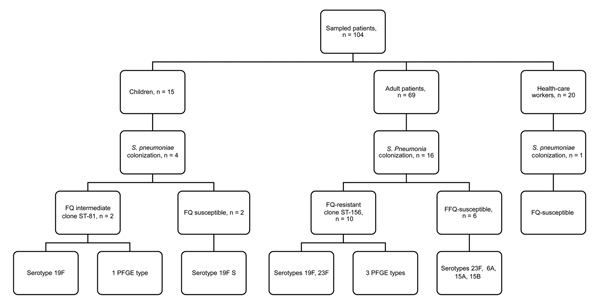Volume 20, Number 5—May 2014
Research
Persistence and Complex Evolution of Fluoroquinolone-Resistant Streptococcus pneumoniae Clone
Figure 1

Figure 1. Serotyping and clonal analysis of the first point-prevalence survey of Streptococcus pneumoniae infection in a post–acute care facility, Israel, 2006–2011FQ fluoroquinolone; ST, sequence type; FQISP, fluoroquinolone-intermediate Spneumoniae; FQRSP fluoroquinolone-resistant Spneumoniae.
Page created: April 16, 2014
Page updated: April 16, 2014
Page reviewed: April 16, 2014
The conclusions, findings, and opinions expressed by authors contributing to this journal do not necessarily reflect the official position of the U.S. Department of Health and Human Services, the Public Health Service, the Centers for Disease Control and Prevention, or the authors' affiliated institutions. Use of trade names is for identification only and does not imply endorsement by any of the groups named above.